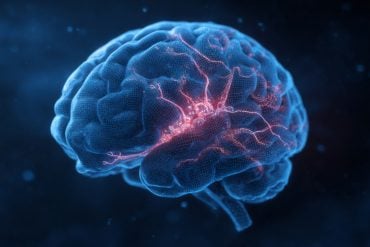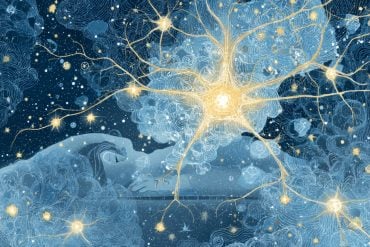Researchers identify unique and shared brain patterns in ADHD and bipolar disorder, which could aid diagnosis and treatment in the future.
A new King’s College London study has identified both unique and shared brain patterns in attention-deficit/hyperactivity disorder (ADHD) and bipolar disorder (BD), which could, in the future, help clinicians more accurately diagnose and treat the conditions. The research is published today in Psychological Medicine.
ADHD and BD are common psychiatric conditions in adults and both are associated with severe impairment and high risk for negative outcomes. Due to the overlap of certain symptoms, including emotional instability, restlessness and distractibility, there can be uncertainty regarding the distinction between the two disorders in some cases, which can lead to incorrect diagnosis and treatment.
King’s researchers recorded the brain activity of 20 women with ADHD, 20 women with BD and 20 women without either disorder using EEG (electroencephalography), which measures patterns of brain activity using non-invasive electrodes placed on the scalp.

These brain patterns were assessed while participants performed a computerised cognitive task. Participants were asked to respond to the letter ‘X’ following an ‘O’ and to withhold their responses if ‘O’ did not precede an ‘X’. This assessment was designed to measure levels of attention and the ability to inhibit an incorrect response.
Women in the control group showed an expected increase in brain activity when withholding (or inhibiting) their responses, whereas a significantly smaller brain response was observed in both women with ADHD and women with BD. This suggests that when the ADHD and BD groups needed to inhibit incorrect responses on the tasks, their brains were not processing the information in the same way as controls. According to the authors, this abnormal brain response may explain the inhibition deficits and impulsivity found in both disorders.
However, it was women with BD who showed an additional impairment. Compared to the ADHD and control groups, they displayed a weaker brain response related to the ability to monitor their own performance and select correct responses. The researchers suggest that, for women with BD, their brains may work less efficiently when it comes to monitoring their own performance on a task.
Giorgia Michelini, PhD Student in the MRC Social, Genetic and Developmental Psychiatry Centre at the Institute of Psychiatry, Psychology & Neuroscience (IoPPN), King’s College London, said: ‘Assigning the correct diagnosis for ADHD and bipolar disorder is absolutely crucial as the treatment options for these conditions are different – whether that be stimulant medication for ADHD or mood stabilisers for BD.’
Professor Jonna Kuntsi, also of the IoPPN at King’s College London, said: ‘The identification of distinct brain patterns between these disorders may in the future serve as a ‘biomarker’ to aid in the accurate diagnosis of ADHD and BD in the case of people presenting with features of both conditions.
Source: Jack Stonebridge – King’s College London
Image Source: The image is adapted from the King’s College London press release
Original Research: Full open access research for “Disorder-specific and shared neurophysiological impairments of attention and inhibition in women with attention-deficit/hyperactivity disorder and women with bipolar disorder” by G. Michelini, G. L. Kitsune, G. M. Hosang, P. Asherson, G. McLoughlin and J. Kuntsi in Psychological Medicine. Published online November 10 2015 doi:10.1017/S0033291715001877
Abstract
Disorder-specific and shared neurophysiological impairments of attention and inhibition in women with attention-deficit/hyperactivity disorder and women with bipolar disorder
Background In adults, attention-deficit/hyperactivity disorder (ADHD) and bipolar disorder (BD) have certain overlapping symptoms, which can lead to uncertainty regarding the boundaries of the two disorders. Despite evidence of cognitive impairments in both disorders separately, such as in attentional and inhibitory processes, data on direct comparisons across ADHD and BD on cognitive–neurophysiological measures are as yet limited.
Method We directly compared cognitive performance and event-related potential measures from a cued continuous performance test in 20 women with ADHD, 20 women with BD (currently euthymic) and 20 control women.
Results The NoGo-N2 was attenuated in women with BD, reflecting reduced conflict monitoring, compared with women with ADHD and controls (both p < 0.05). Both ADHD and BD groups showed a reduced NoGo-P3, reflecting inhibitory control, compared with controls (both p < 0.05). In addition, the contingent negative variation was significantly reduced in the ADHD group (p = 0.05), with a trend in the BD group (p = 0.07), compared with controls.
Conclusions These findings indicate potential disorder-specific (conflict monitoring) and overlapping (inhibitory control, and potentially response preparation) neurophysiological impairments in women with ADHD and women with BD. The identified neurophysiological parameters further our understanding of neurophysiological impairments in women with ADHD and BD, and are candidate biomarkers that may aid in the identification of the diagnostic boundaries of the two disorders.
“Disorder-specific and shared neurophysiological impairments of attention and inhibition in women with attention-deficit/hyperactivity disorder and women with bipolar disorder” by G. Michelini, G. L. Kitsune, G. M. Hosang, P. Asherson, G. McLoughlin and J. Kuntsi in Psychological Medicine. Published online November 10 2015 doi:10.1017/S0033291715001877






